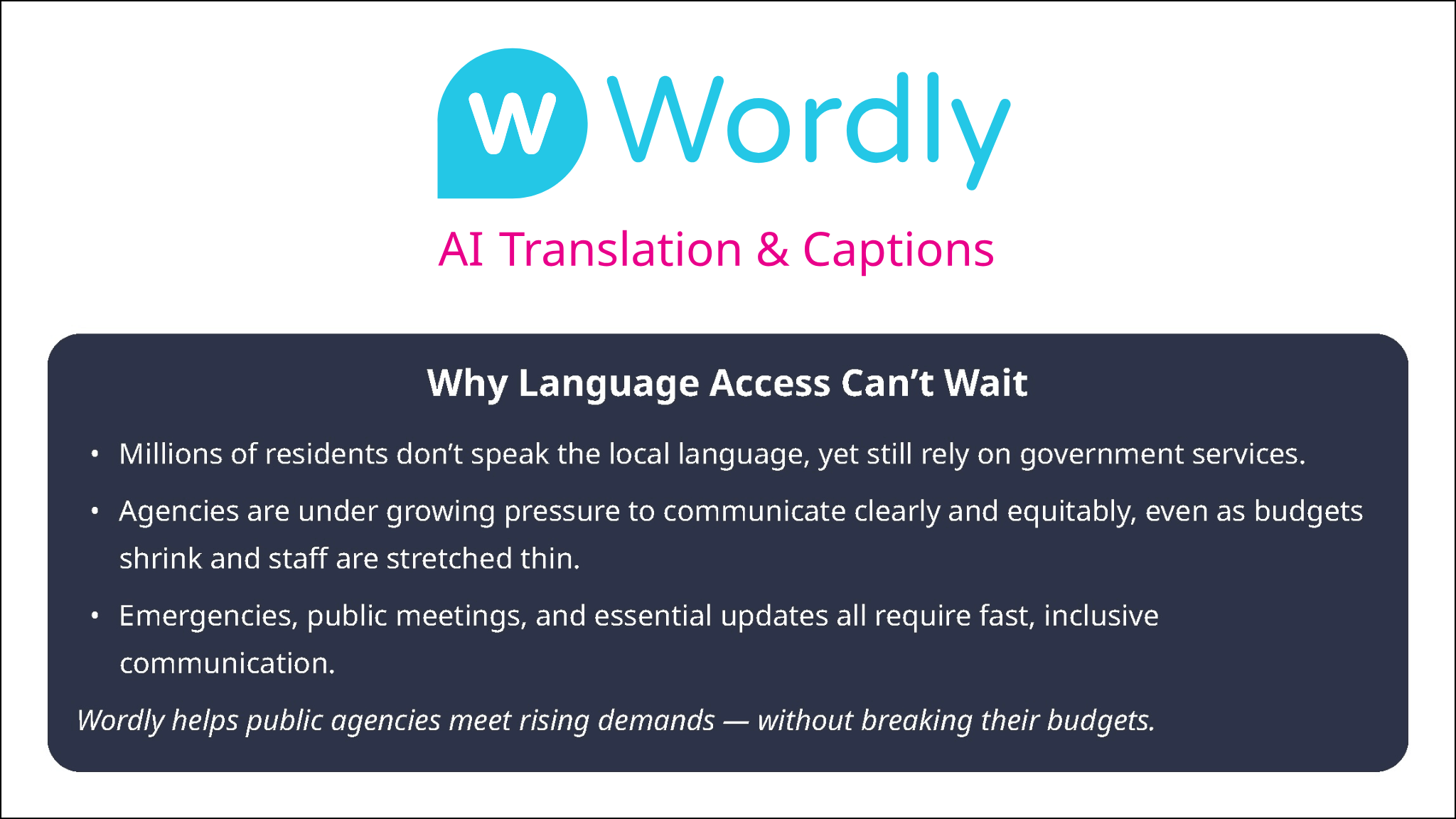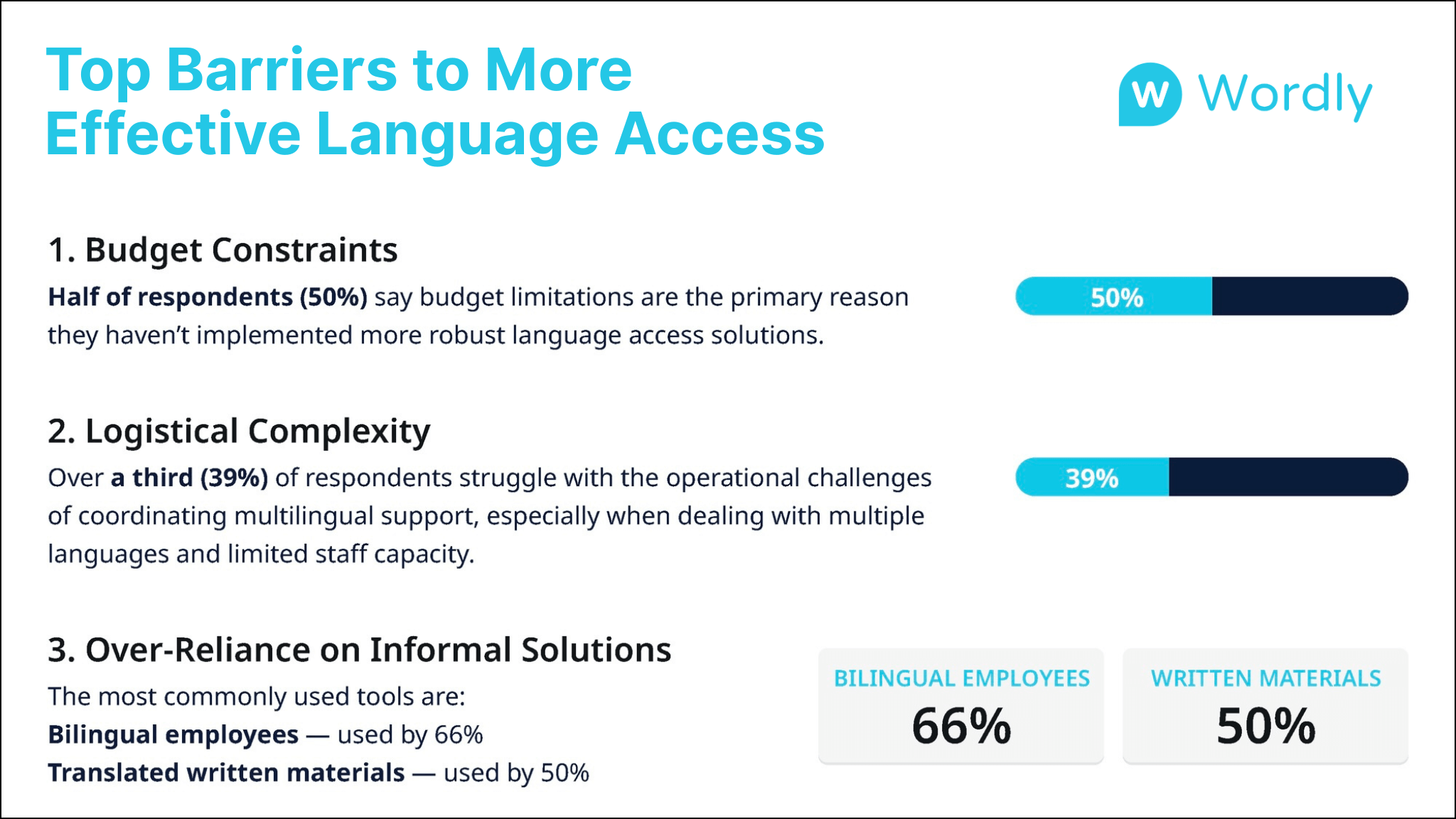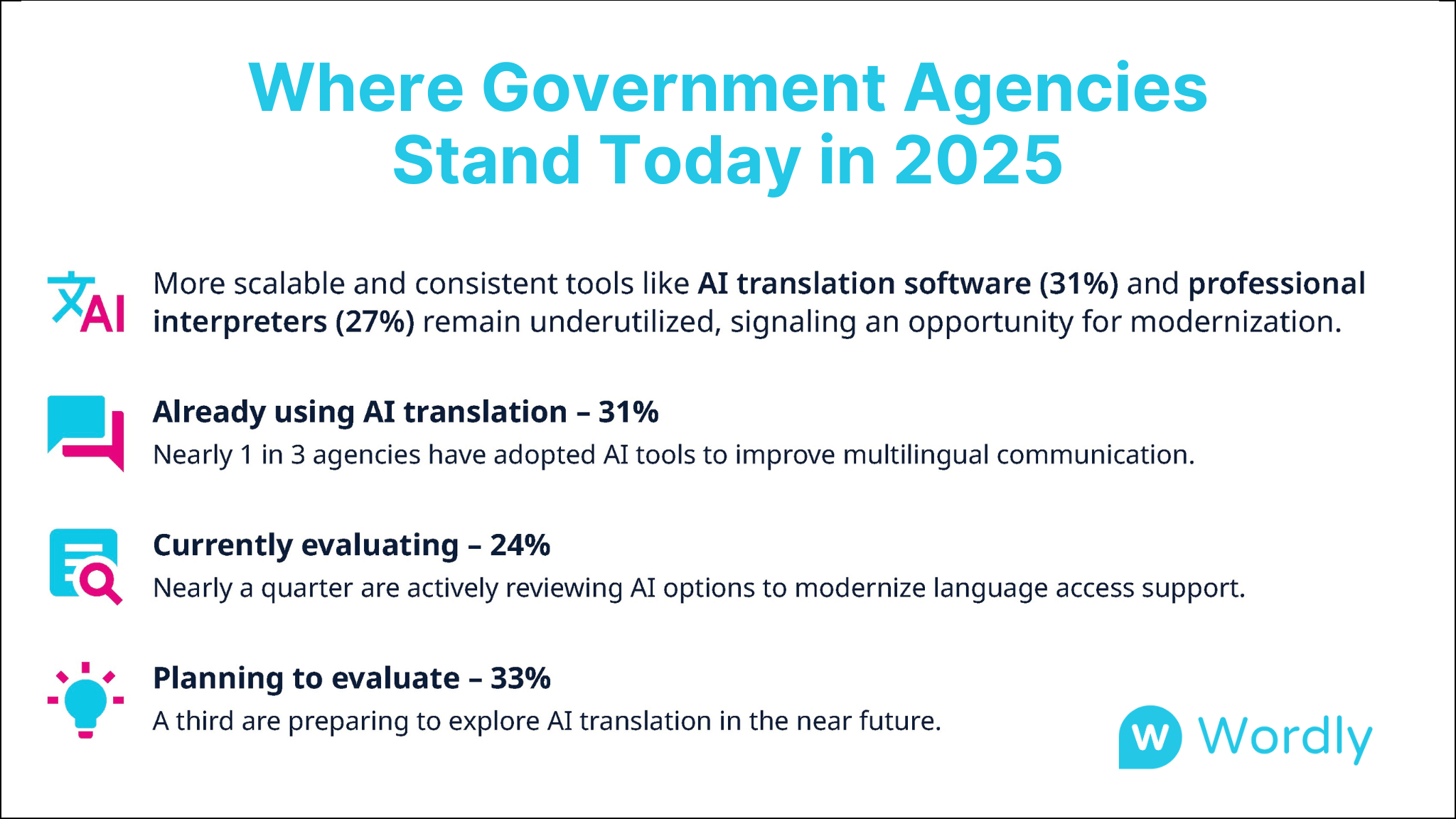Wordly launches Voice Transcripts for AI Dubbing — Learn More
Wordly partnered with SmartBrief to survey 117 public sector employees from municipalities across the U.S. to better understand how local governments are approaching multilingual communication. The survey was administered online in March and published May 2025.
Language access is becoming a top priority for public agencies across the U.S., and for good reason. Millions of residents don’t speak the local language but still rely on government services. Agencies are under pressure to communicate more clearly, even as budgets shrink and staff are stretched thin. The stakes are high: emergencies, public meetings, and essential updates all require fast, inclusive communication.
Government professionals surveyed in 2025 identified three key benefits they expect from improved language access:
Wordly helps public agencies meet these rising demands, without breaking their budgets.

The number of non-native English speakers is increasing in the majority of municipalities, and 65% of government professionals now consider language access “very important.” Yet the need is not being met – 62% say their meetings are “low” or “not at all” inclusive.
Top barriers to more effective language access include:
These gaps reveal an urgent need for more scalable, consistent solutions that can deliver inclusive communication without overburdening teams.

When asked about their language access priorities, government professionals pointed to services that directly impact public safety, access, and participation:
Despite these clear priorities, only 21% of agencies are actively investing in staff training for language access, indicating a workforce readiness gap. At the same time, more modern tools remain underused. AI translation software (31%) and professional interpreters (27%) are still not widely adopted, though interest is rising.
Here's where agencies stand today:
The momentum is building. With the right tools, public agencies can deliver more accessible services, improve engagement, and create a more inclusive experience for every resident—no matter what language they speak.

Some key statistics from the AI translation research report include:
Most cities report that the number of non-native English speakers in their communities is increasing.
A majority (61%) of municipalities report that the number of non-English speakers is increasing
Only 16% report no change
Language Access is widely recognized as a priority for municipalities but implementation is lacking
Nearly two-thirds (65%) of respondents say language access is “very important” for their community
Only 11% consider it a low priority or not important at all
62% of respondents say their meetings are either “low” or “not at all” inclusive
Cities over rely on informal solutions to support language access
The most commonly used method is relying on bilingual employees (66%)
Written translation (50%) and captions (37%) are more common than AI translation (31%) or professional interpreters for 2 or more languages (19%)
Fewer than 1 in 5 (18%) municipalities use sign language interpretation
Top barriers for language access and use case prioritization include
Half (50%) of respondents cite budget as the main obstacle to improving language access.
Logistical complexity (39%) is the second highest barrier.
81% of respondents say access to public services is the top objective for investing in translation and caption services.
Civic engagement (67%) and public safety (61%) also rank highly.
Interest in AI translation is high, though adoption is still emerging
Over half (57%) of respondents are either currently evaluating or plan to evaluate AI translation tools
28% say they have no plans to evaluate, and 12% have never heard of the technology
These highlights only scratch the surface. The full Ebook includes comprehensive findings from 117 municipalities, segmented by city size, region, and political leaning. See how language access priorities, barriers, and adoption of AI translation tools vary across the country - and uncover data-driven insights to guide your own language access strategy.